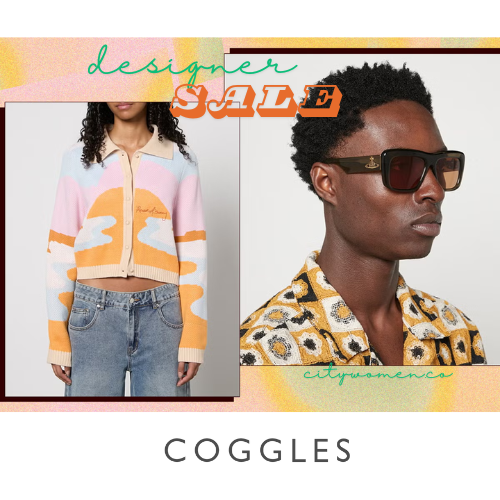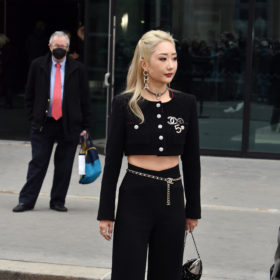
April 21, 2020 at 02:00PM
As people around the country enter their sixth week of self-isolation, FASHION is reaching out to some of our favourite Canadians to get a peek into how they’re living their lives in lockdown (remember: #StayHomeSaveLives). Each week, keep an eye out for new self-isolation diaries from actors, designers, athletes and artists who are riding this uncertain time out with us.
Dorian Rahimzadeh, founder and creative director, Dorian Who
I am lucky enough to have my little studio where I am able to keep busy, work alone and self-isolate. Recently, I have started making upcycled masks with the leftover fabric I’ve been saving in my studio. At the beginning of March, I was working on a new collection and filling orders with the help of my interns. But since the outbreak, like every other business, I’ve had to send my team home to self-isolate. So, I was forced to once again start doing everything on my own. Though it’s a lot of work, I’m quite comfortable working by myself. I enjoy spending time alone but this situation has made me re-think so many aspects of my day-to-day life and has helped me learn to better balance life and work. This ‘pause’ has allowed me to reconsider so many things and shown me how to better appreciate and take in small moments.
For me, the hardest part is not being able to see and hug my loved ones, or do normal outdoor activities but I am doing my best to stay positive. To keep a positive mindset I work out every morning for about an hour and a half with my jump rope and TRX. After my workout, I pack breakfast/lunch. Usually oatmeal, a smoothie and a ginger shot!
I begin my workday by responding to e-mails, then I start on making masks and orders. The cotton masks I make are being made out of fabric scraps and are non-medical, washable masks meant only for running errands like grocery shopping. I have also started to make non-filtered surgical masks to donate to local Toronto healthcare workers. Every bit of help, no matter how big or small, counts and is very important! We are all in this together.
ADVERTISEMENT
ADVERTISEMENTKate Spade Autumn/Winter Sale |
Once I’m finished with masks and orders at the studio, I start working on content for my Instagram accounts; my personal and clothing line. I do things like take style photos, e-commerce photos and write captions. For my styling photos, I bring an outfit or style whatever I’ve worn that day using whatever is around in my studio. When I’m finished with content, I prepare the orders to be shipped the next day.
I finish my studio days around 7 or 8pm. I go home and eat dinner, usually a nice bowl or salad, then spend time with my family and work/research, watch interviews or documentaries on my laptop until I’m tired. I recently started to meditate before bed and find it helps me fall asleep faster and stay asleep longer.
Since the beginning of self-isolation, it’s become much more difficult to collaborate with other creatives and photographers. I absolutely love meeting new people and collaborating. It’s great having someone else’s input and it’s so fun to experiment with different photography styles, makeup and hairstyles. But now I’ve had to start being my own photographer and doing my own hair and makeup and I’m really loving it! I see this as a great opportunity for me to practice my photography and hair/makeup skills and come up with different, unique, creative ways of doing things.
As an emerging designer, I have always tried to improve myself through learning, using international platforms like The Business of Fashion and constantly trying to update everything I do. Before things got serious, we were hearing more and more conversations about global warming, sustainability and the evil of fast fashion but it was not yet a vital topic. This pandemic and the fact that it’s happening globally gives us a serious chance to change the way we do things and totally rethink and reset fashion.
The most recent change I made, that I thought would be proactive and beneficial to my brand, is removing traditional seasonal collections. I decided that going forward my collections will all be seasonless. The speed of fashion is insane and I have found it very difficult to keep up with. I want to spend more time on each piece, to update and perfect them instead of introducing more new styles. Dorian Who is also sold internationally. A lot of my customers come from different climates than here in Toronto where we have long winters and short summers. Bypassing traditional weather-driven seasons is the first step I’ve taken that allows me to create garments that can be worn almost anywhere, throughout the year.
Consumer behaviour also needs to change and I believe this experience, the fear of the unknown and having no choice but to face it head-on, will really begin to open people’s eyes to ‘new’ concepts and broaden their perspectives. There is no better time than the present to take action, to learn and educate people on the importance of the way we approach and think about fashion. Right now we can work on every aspect of this with a positive mindset to prepare ourselves for the future and to have an all-around happier, healthier planet. I mean, where are we going to end up if things continue to operate at this incredible speed? It’s time we slow down, and bring some joy back into the process.
The post Self-Isolation Diary: A Day in the Life of Designer Dorian Rahimzadeh appeared first on FASHION Magazine.
Author FASHION Staff | Fashion Magazine
Selected by CWC
ADVERTISEMENT
ADVERTISEMENTUp to 30% off Gift Sets |







